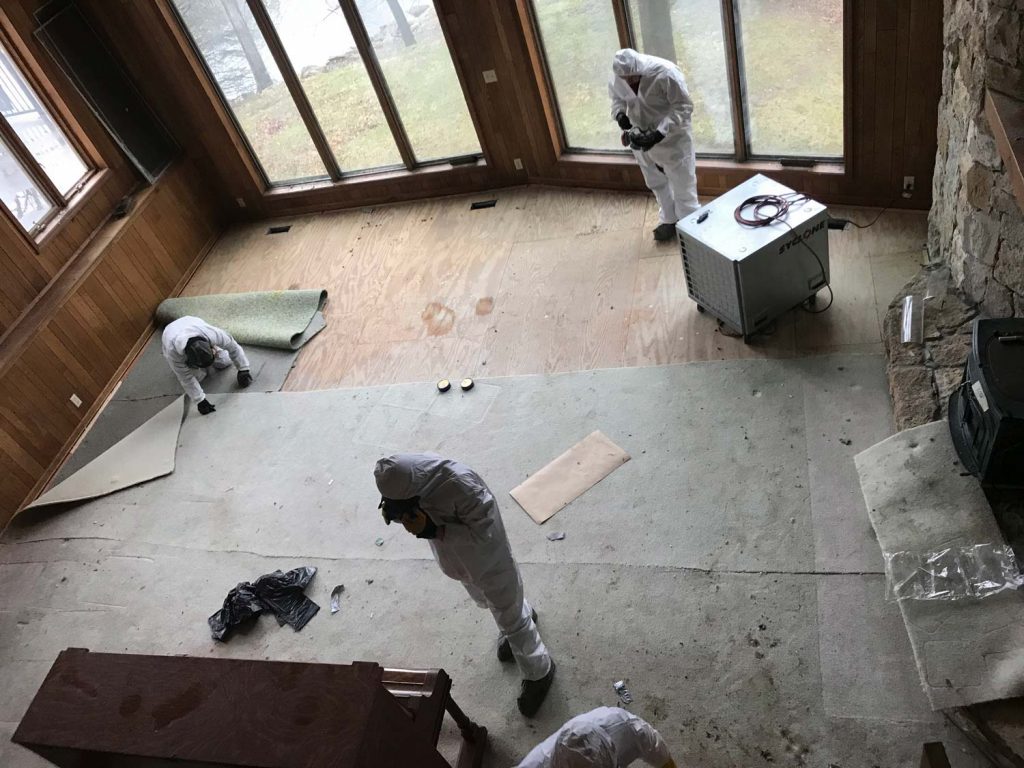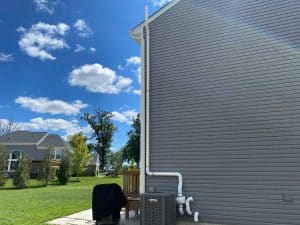Radon is a naturally occurring radioactive gas that can be found in soil, rock, and groundwater sources. It can seep into buildings through cracks in foundations, walls, and other building materials, leading to increased radon exposure and an increased risk of developing lung cancer. According to the United States Environmental Protection Agency (US EPA) and the Centers for Disease Control and Prevention (CCDC), radon is the second leading cause of lung cancer after cigarette smoking.
To ensure the most accurate Radon testing results, we leave door hangers in the testing area (and on exterior doors) with tips on how to keep the best conditions. However, even with closed doors and windows, the accuracy of your Radon testing can still be affected by your usually innocent dehumidifier.
Testing for Radon Indoors: Accurate Assessment and Mitigation
To obtain accurate radon test results, it’s crucial to maintain an optimal testing environment. One factor that can affect the accuracy of your radon test is the presence of a dehumidifier. That white box may help keep the air dry (indeed, you should probably run that guy from May to October), but it can really affect the assessment of Radon level in your closed testing environment.
Of course, it won’t change the volume of Radon gas in your space, but it can dramatically affect the ability of any system to gather an accurate final reading. To ensure the best data, turn off your dehumidifier at least 12 hours before conducting a radon test. This allows radon levels to normalize and provides a more accurate indicator of the average concentration of radon in your space.
The tolerances on Radon testing and mitigation are pretty tight, so good data is essential for making informed decisions that help lead us to the optimal Radon mitigation technique for your property.
If you’re planning your Radon indoors test already, let us know, and we’ll make sure this goes smoothly, and we all have the best information possible to make great decisions that keep your building safe.
If you have high radon levels in your home or workplace, you’ll need to implement a radon mitigation system to reduce the risk of lung cancer. We are a qualified contractor that can install a radon reduction system, such as soil suction or sealing cracks and openings, to prevent radon entry and improve indoor air quality. Regular radon testing is also essential to ensure that your radon mitigation system is effectively reducing radon concentrations.
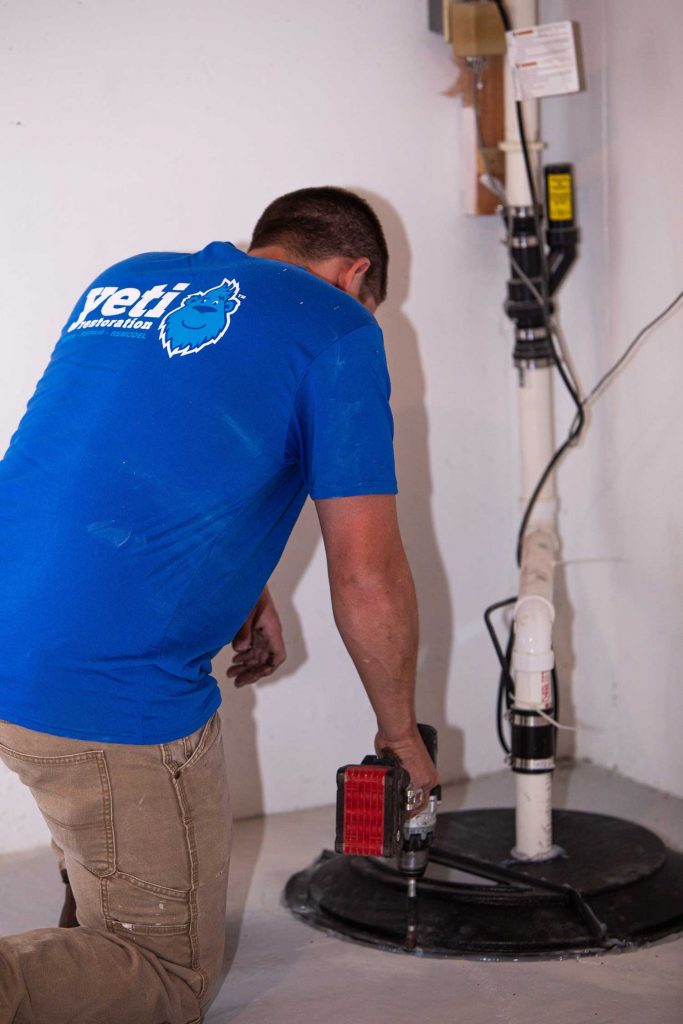
Two Types of Flooded Basements
Radon is a naturally occurring gas that is produced by the decay of uranium in soil and rock. It can enter homes through cracks and gaps in the foundation, walls, and floors, as well as through gaps around pipes and other openings. When a basement floods, it can create new pathways for radon to enter the home.
There are two main types of flooded basements:
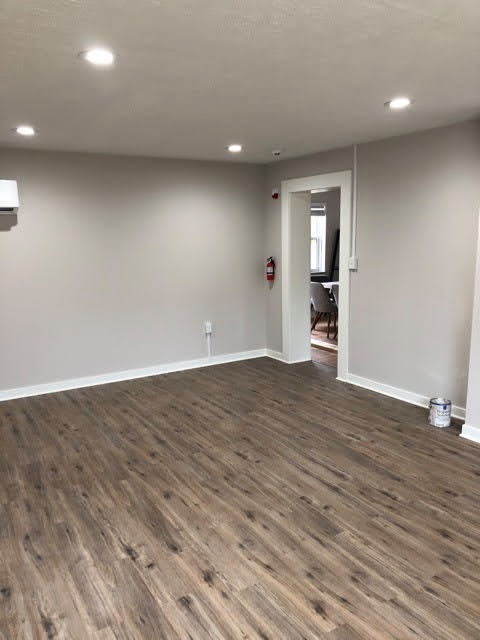
1. Water Damage
True “water damage” is caused by a water intrusion from an inside source, like a burst pipe, overflowing sink, or a leaking hot water heater. And this type of clean water damage can be extensive; the dry-outs we complete every week include water-soaked carpets, saturated walls, and volumes of wet furniture. And on these clean water emergencies, we work with the absolute minimum of demolition. We’re on your team, looking to mitigate (minimize) damage – we won’t cut out anything that doesn’t need it. No one needs extra stress and clean-up.
Sewage back-ups fall into this “water damage” group – but they create a different set of challenges completely – where we need to act quickly to remove airborne toxins that are immediately present. Careful use of clean equipment, and air scrubbing technology, along with total decontamination are vital to getting you back to a “Condition 1” unaffected environment as soon as possible.
But if left untreated, even water that was originally clean gives back secondary damage like mold growth (for example, black mold on walls and ceilings that are affected by the high humidity, even if they didn’t have direct contact with the water). To prevent secondary damage, we respond quickly and begin drying the space as soon as possible – which your insurance policy actually requires to begin quickly to avoid other damage.
2. Flood Damage
‘Flood damage’, on the other hand, is caused by water that enters a property from a ground source after heavy rain, overflowing rivers or streams, or storm surges. Flood damage can be catastrophic and would include some of the most difficult challenges we’ve faced with our customers. If you have water flowing into your basement from a window – technically that’s a flood.
There are some false positives here, though. The best example would be a failed (or overwhelmed) sump pump that has drains from an exterior source such as a floor drain by a basement door, or from a window well. In our experience, your insurance coverage will often extend to recognize that the water entering your home is the direct result of the failed system inside the home. Best to let us assess first before calling that claim in, though.
Flood damage restoration typically involves removing standing water, drying out the property, and disinfecting all surfaces to prevent the growth of harmful bacteria and mold.
It’s important to note that most standard homeowners insurance policies do not cover flood damage, so if you live in an area prone to flooding, you’ll need to have separate flood insurance – which your normal agent should be able to help you with.
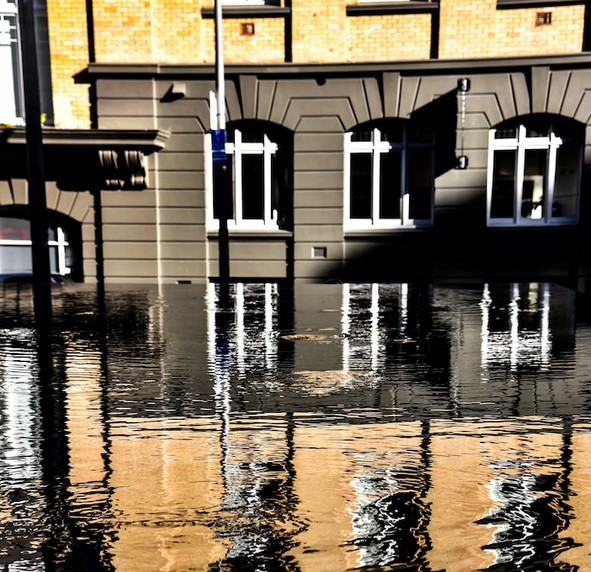
When to File an Insurance Claim
Not every water emergency or flooded basement is a “covered loss” because every insurance policy has inclusionary and exclusionary language designed to make sure that the things you’re paying for are covered – and those you are not, are not.
And not every claim is worth the money to file.
Will your premium go up? Probably.
Will you have to pay out of pocket? Maybe a little.
In reality, we’re called to hundreds of water emergencies every year. And of those, we counsel many people not to file an insurance claim either because we can save them money by drying out the wet space without demolition (thus not needing to file), or they’re not covered anyway.
Sometimes we can estimate the cost of the mitigation, and determine that it’s close to, or only slightly above what your deductible cost will be anyway. In that case, why file?
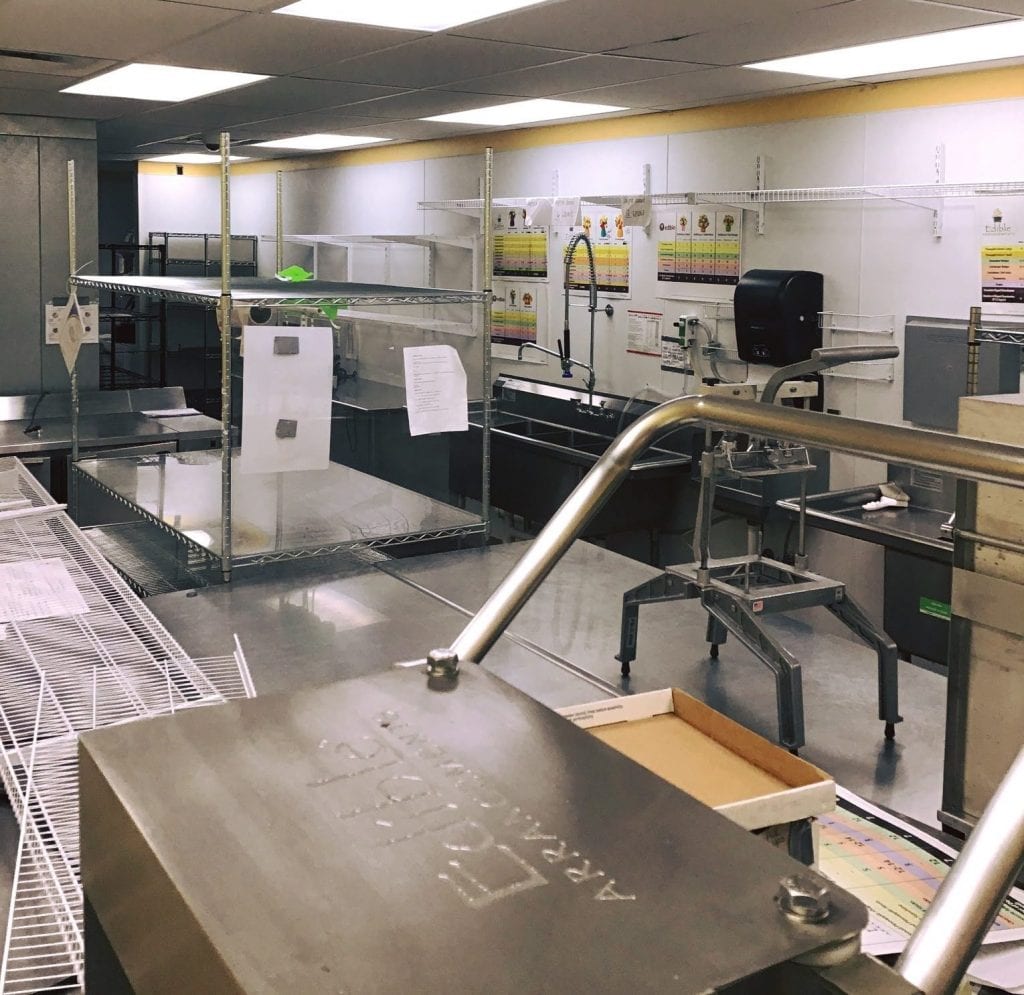
You also don’t have to file your claim in advance of the mitigation. It’s your bill anyway – so you can engage us to serve you with a well-documented mitigation process that you can then choose to turn in for reimbursement to your carrier before any repairs (if necessary) are completed.
You just have to give them the option to review the area after mitigation, and before repairs (if any are necessary).
There are a few oddities in the process:
For example, an actual flood will not be covered by a standard homeowner’s insurance policy. A flood is categorized in the insurance world as water traveling overground and entering your space.
Similarly of interest, if a pipe freezes and pipe bursts in your home, this is covered 100% typically including the plumbing repair – while the repair of the broken fixture is not covered in any other type of claim because it can (or may reasonably) be put down as a maintenance item.
Another horrible one – if you don’t keep your heat on during the winter, or you leave your home for too long on a lengthy vacation – this can nullify your policy, leaving you essentially uninsured.
If you’ve got water everywhere, water in the basement, or wet hardwood floors – call us first, and let’s work out together the next best step. Let’s just do it quickly.
How Bad is Bad?
Water and flood damage is categorized into three types, based on the level of contamination in the water:
- Category 1: Clean water, such as from a broken water supply line.
- Category 2: Water from a washing machine, a leaking dishwasher, or even rainwater coming through an overwhelmed sump pump failure.
- Category 3: Such as from a sewage backup, toilet overflow, flooded basement from a river or stream, or standing water that has aged (which has begun to support bacterial growth).
Interestingly (to us, because we geek out on this), any category of water can deteriorate into any worse category. But never gets better.
For example, given time or the right conditions, a Category 1 water loss will become a Category 3 – all you need is for that water to run through the carpet that the dog peed on, and that carpet may not make it. Or that Category 1 water can sit just long enough to support microbial growth, and voila – Category 3.
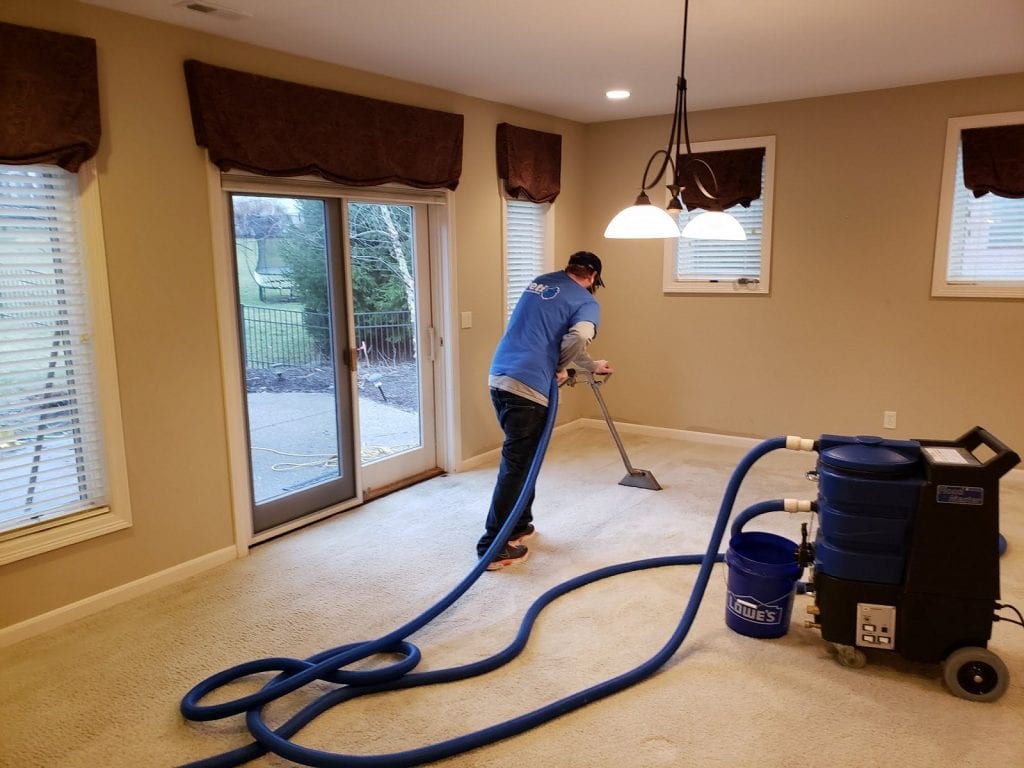
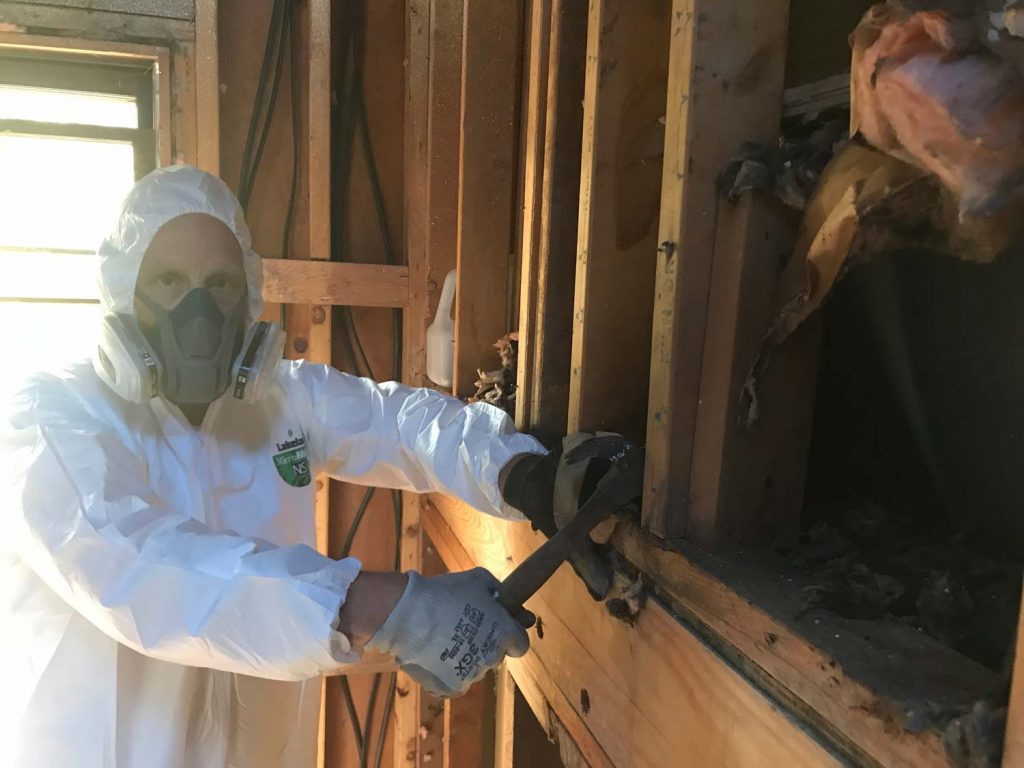
In your office, when the dishwasher leaked into the cabinet on Friday, and it was still there on Monday – that’s likely Category 3 now; “grossly contaminated”. The toxins in the water, especially once mixed with the various bio-life and chemicals on the floor, plus the addition of time, mean that we have additional cleaning steps required for sure.
You’d expect that we respond to every category of water damage 24/7, in a different way. And you’d be right. We’re experts in determining the necessary scope of action for your building, presenting you with that plan, and actioning immediately for the best possible outcomes.
You can expect that a sewage backup from the sewer system coming into your basement or bathroom will usually involve a greater measure of demolition, while a “Category 1” loss with clean water spills will often be dried entirely in place, with carpets, walls and even hardwoods saved!
Our goal is to mitigate your downtime, financial exposure, and general pain of a water event, sewage back-up, or emergency. We’ll make sure your emergency water situation is a lot less painful than it would be without us!

Water Damage - Hardwood Floors
You may be able to save your wet natural hardwood floors. Water-damaged hardwood floors will buckle and crown if left to dry naturally. This buckling shows that water has penetrated the underside of the floor, where the wood is ridged, and water can run unhindered along the subfloor (or tar paper) underneath.
Water will spread underneath hardwood floors until it finds at outlet, a low spot, or it is wicked up into the hardwood floor entirely. The lower part of the wet hardwood floor absorbs the water, while the top side is covered in polyurethane and won’t expand – this leads to the cupping hardwood floor you might already see.
If the floors are still saturated, and the water damage was very recent, we can usually save your floors! We use floor mat rescue systems to pull water back through the floors, while dehumidifying at the same time from above (and sometimes below) at the same time. This technique can be hugely effective and has saved literally hundreds of thousands of dollars for our customers over the years.
To have the best chance at saving your cupped and wet hardwood floors, call us as quickly as possible.
You don’t need to have a claim filed yet, just a call so we can make the best next decision to save what we can in your space.
